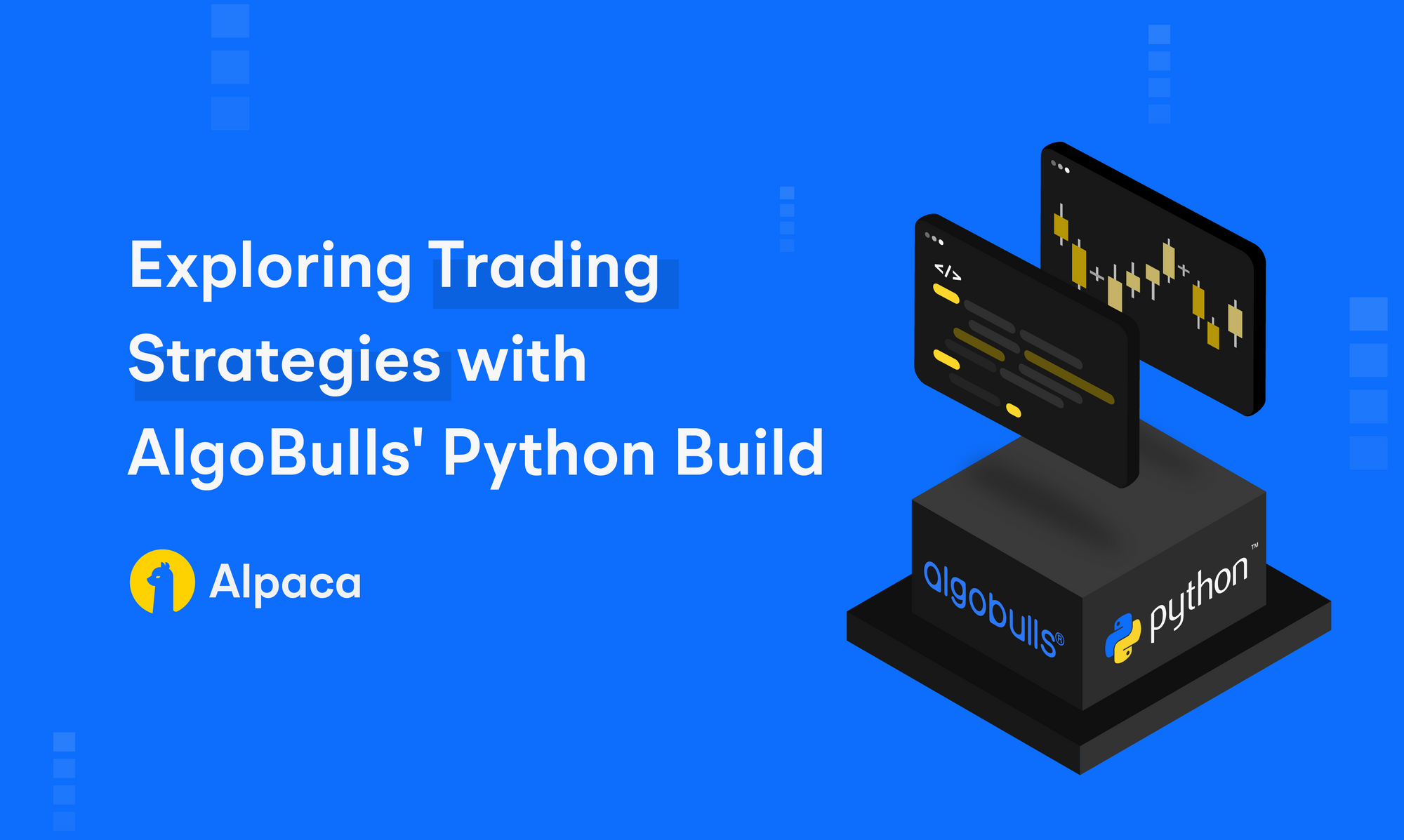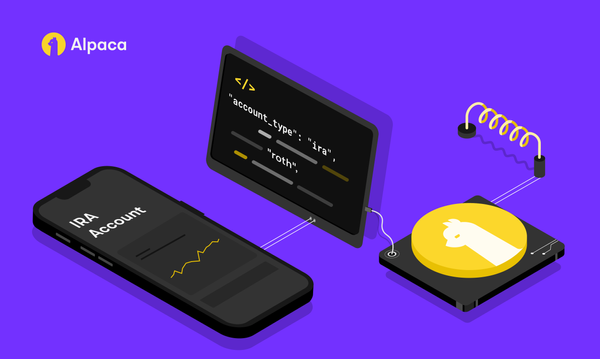Exploring Trading Strategies with AlgoBulls' Python Build
Check out the first installment of this informative series on how to create, configure, backtest your algo trading strategies and more with AlgoBulls Python Build ?


The world of algorithmic trading is extremely complex, and navigating this world without proper understanding and guidance is difficult. This is because, in algo trading, the majority of the time goes into tech and data management, leaving less for winning strategies.
With that being said, your fear is about to end as we introduce you to AlgoBulls’ “Python Build”. Python Build is a state-of-the-art algorithmic trading platform that helps you say goodbye to all your algo trading dilemmas and addresses all the pain points with precision.
To give you the solution for all your algo trading pain points, we have come up with this series of informational blog posts that will help you navigate through the complexities of algorithmic trading. From the freedom to create your strategies in any way you want to tweaking and executing them in any mode possible, we will help you learn everything using AlgoBulls’ “Python Build”.
Keep following this series and in no time, all your algo trading pain points will have a solution. So, fasten your seatbelts, because we're about to embark on a trading adventure like no other.
Getting Started with Python Build
To begin your journey with Python Build, simply Log In / Sign Up to your AlgoBulls account using Google. Make sure to activate the “Starter Python Build Plan” from the Pricing Page as we have ensured to keep Live Trading FREE for our users in the US. Click on "Python Build'' in the left-side menu. You'll be greeted by a splash screen offering you five intriguing options, each designed to supercharge your trading strategies.
Create Your Strategies:
Python Build gives you the flexibility to create your strategies in multiple ways, with ‘Ready Templates’ being the best way to start your journey if you are a beginner. The various methods for strategy creation are:
- Create Using AI: Are you bursting with creative trading ideas but lack coding experience? No problem! With this feature, you can write prompts in plain English and let Generative AI transform them into strategy codes. You can even explore our "Prompt Library" for inspiration. Read more about this on our doc site.
- Ready Templates: In a hurry or seeking tested strategies? Dive into our collection of pre-made templates, developed and vetted by our experts. Use them as they are or tweak them to match your unique requirements. Explore our documentation to know more.
- Professional Support: Bridge the gap between your market expertise and coding skills. Our developers will craft a tailor-made strategy based on your description and needs, ensuring a perfect fit for your trading goals. Read here to learn how our Professional Support works.
- Code From Scratch: If you're a trading pro itching to build your strategy from the ground up, this feature is your playground. Maximum flexibility, and complete control—it's all at your fingertips. We have a dedicated article just to teach you how to code your own strategy from scratch.
- My Coded Strategies: Keep all your saved strategies neatly organised in this section for easy access.
Configuring Your Strategies
Once you've selected or created a strategy, it's time to fine-tune the parameters. Head over to the "Configuration Parameters" tab, where you can customise key settings like underlying securities, candle size, maximum order count, and specific user-defined parameters. For more details on these parameters, click here.
With your configurations set, save them and specify the start and end date-times along with the quantity (number of lots) for your selected instruments. The best part? You can execute your strategy for Backtesting, Paper Trading, or Live Trading without altering a single line of code. AlgoBulls has got all the tedious bits covered for you.
Backtesting and Beyond
Before you jump into live trading, it's wise to backtest your strategy to gauge its performance. Python Build provides a wealth of statistics and charts to help you analyse how your strategy stacks up. This step is crucial, especially during backtesting and paper trading, as it gives you a glimpse of your strategy's potential success in live markets. To read more about all our analytics features, click here.
Once you're satisfied with your Backtesting and Paper Trading results, it's time for the real deal—live market execution. Connect your Alpaca Account using the OAuth method for seamless integration and better security.
To know how to set up your Alpaca account, click here.
To execute your strategy, go back to your strategy and select “Save and Start”. In the execute modal that opens, switch the execution mode to Live Trading and set your execution time and quantity (lots). Set your broker as “Alpaca” if not already set. Once everything is ready, click “Execute” to run your strategy. That’s it! We will spin up a dedicated virtual server for your strategy and it will start executing your strategy on our state-of-the-art infra. You can sit back, relax and have a peace of mind as your fully automated strategy does the hard work for you.
Monitoring and Fine-Tuning
After execution, keep an eagle eye on your strategy's activity in the “Data” section. Any Python errors? Don't worry; they're right there in the logs, ready for you to debug. You can also verify order details on the Alpaca website for added peace of mind by clicking here.
In Conclusion
AlgoBulls' Python Build isn't just a tool; it's your trading companion, simplifying the process of creating and executing trading strategies. Whether you're a newbie or a seasoned trader, our platform adapts to your needs.
For those who love working with Jupyter Notebook, you'll be pleased to know that our Python package "pyalgotrading" on GitHub offers the same functionality. To understand the process of algo trading using Jupyter Notebook and Python Build, click here. You can alternatively read more about our pyalgotrading package here.
Thank you for joining us on this trading journey. Since this is a series of blog posts to tackle your pain points, we will dive into every aspect given here in detail for you. In the next article, we will dive into the first step of the process, which is “Strategy Creation”. Learn all about the structure of strategy codes and how to create it from scratch. So, get ready to elevate your trading game with AlgoBulls' Python Build—it's time to trade like a pro.
Options trading is not suitable for all investors due to its inherent high risk, which can potentially result in significant losses. Please read Characteristics and Risks of Standardized Options before investing in options.
Alpaca Securities LLC and AlgoBulls are not affiliated and neither are responsible for the liabilities of the other.
Please note that this article is for educational and informational purposes only. All screenshots are for illustrative purposes only. The views and opinions expressed are those of the author and do not reflect or represent the views and opinions of Alpaca. Alpaca does not recommend any specific securities or investment strategies.
Alpaca does not prepare, edit, or endorse Third Party Content. Alpaca does not guarantee the accuracy, timeliness, completeness or usefulness of Third Party Content, and is not responsible or liable for any content, advertising, products, or other materials on or available from third party sites.
Securities brokerage services are provided by Alpaca Securities LLC ("Alpaca Securities"), member FINRA/SIPC, a wholly-owned subsidiary of AlpacaDB, Inc. Technology and services are offered by AlpacaDB, Inc.
This is not an offer, solicitation of an offer, or advice to buy or sell securities or open a brokerage account in any jurisdiction where Alpaca Securities are not registered or licensed, as applicable.
All investments involve risk and the past performance of a security, or financial product does not guarantee future results or returns. There is no guarantee that any investment strategy will achieve its objectives. Please note that diversification does not assure a profit, or protect against loss. There is always the potential of losing money when you invest in securities, or other financial products. Investors should consider their investment objectives and risks carefully before investing.
The Paper Trading API is offered by AlpacaDB, Inc. and does not require real money or permit a user to transact in real securities in the market. Providing use of the Paper Trading API is not an offer or solicitation to buy or sell securities, securities derivative or futures products of any kind, or any type of trading or investment advice, recommendation or strategy, given or in any manner endorsed by AlpacaDB, Inc. or any AlpacaDB, Inc. affiliate and the information made available through Paper Trading is not an offer or solicitation of any kind in any jurisdiction where AlpacaDB, Inc. or any AlpacaDB, Inc. affiliate is not authorized to do business.




